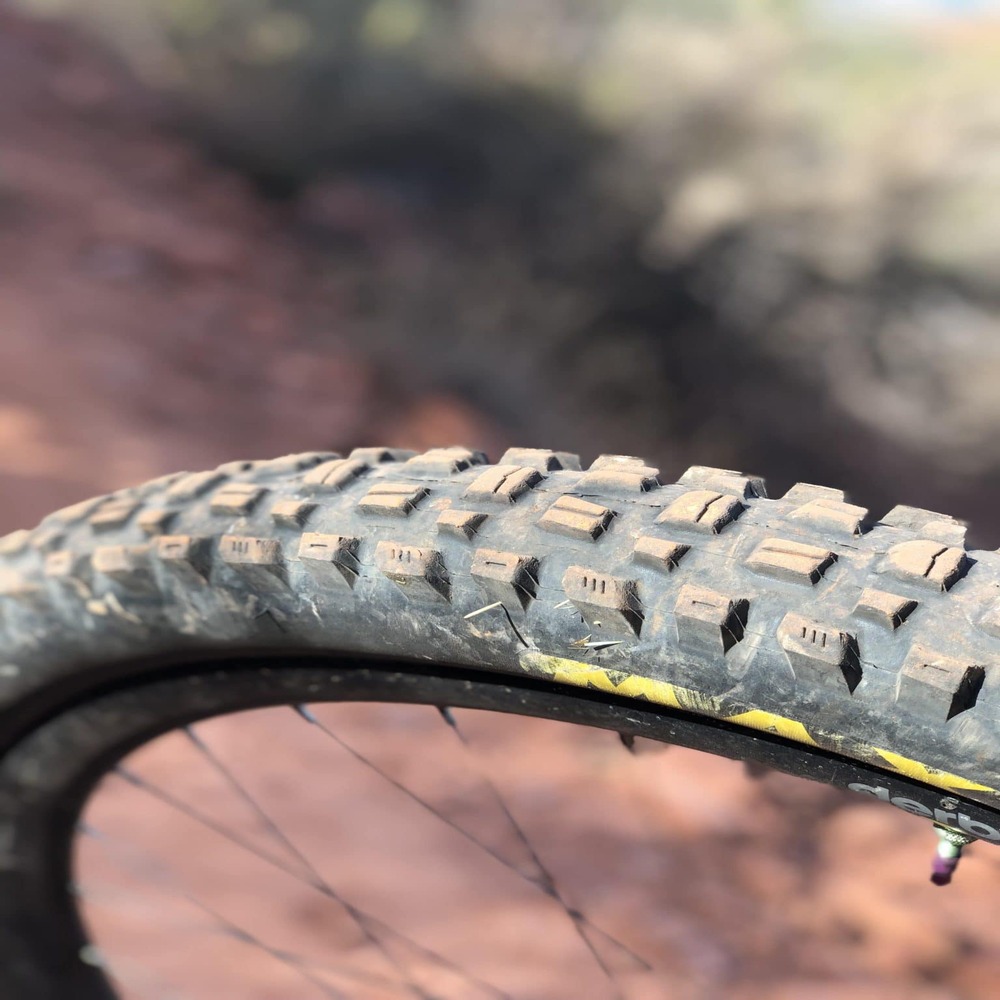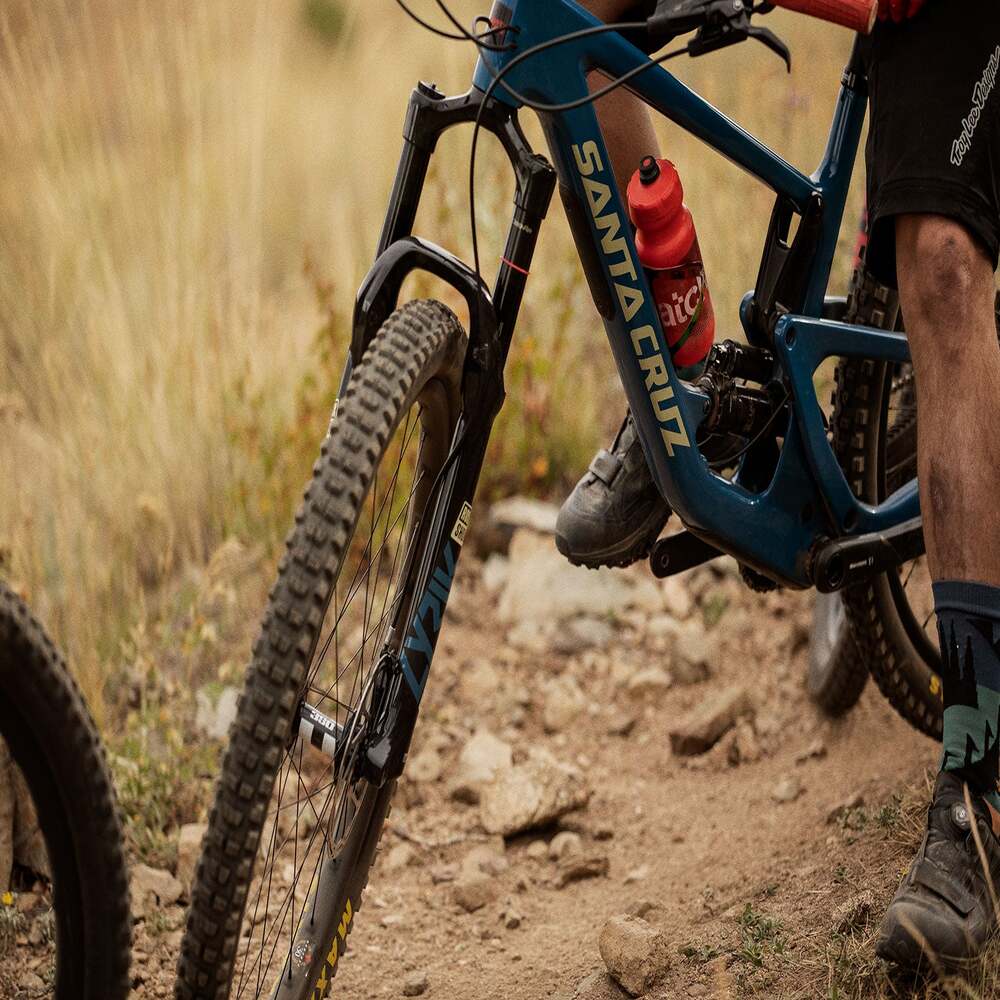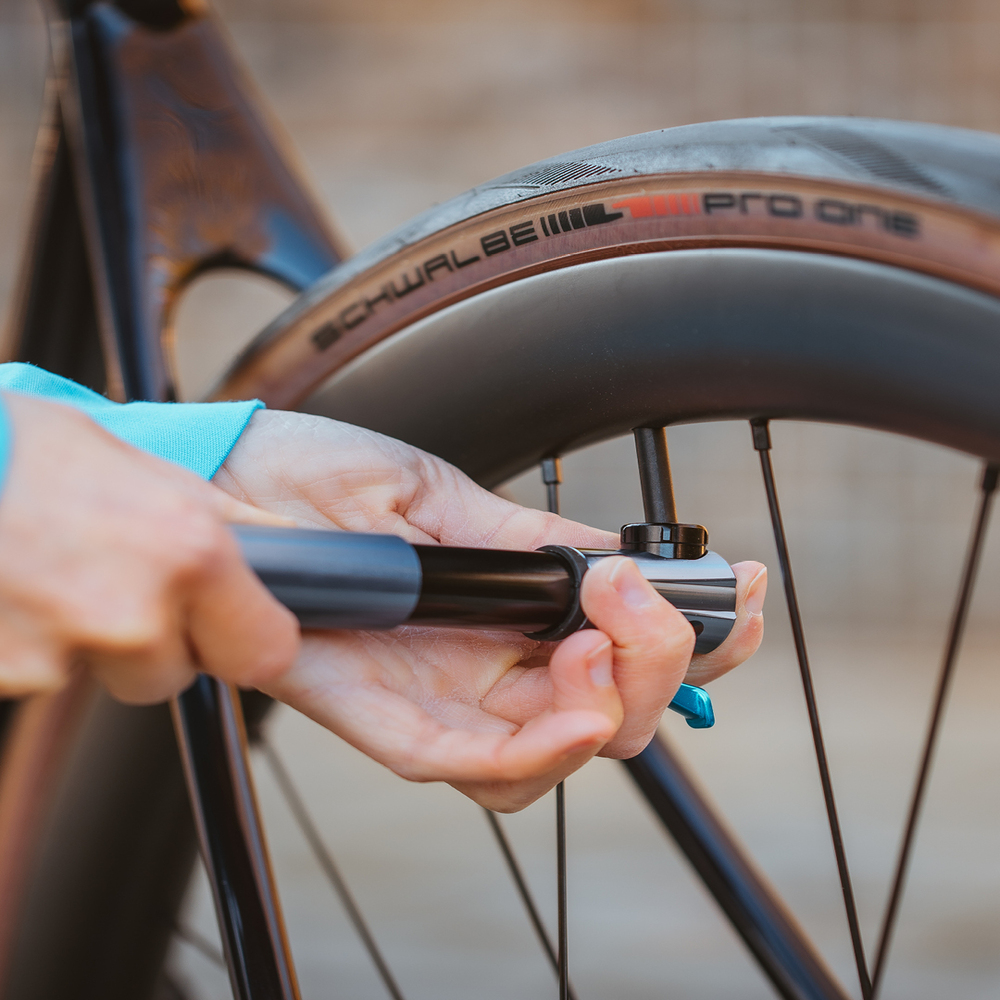Proper tire pressure is crucial in optimizing the performance, safety, and longevity of your bicycle. Consequently, understanding the correct PSI (pounds per square inch) for your bicycle’s tires can significantly impact your riding experience. Therefore, this comprehensive guide explores the factors affecting bicycle tire PSI, the importance of maintaining proper pressure, the differences among various types of bicycles, and practical tips for checking and adjusting tire pressure. By delving into these aspects, you can ensure an optimal and safe ride.
Factors Affecting Bicycle Tire PSI
Several factors can influence the ideal PSI for your bicycle tires, including the type of bicycle, the rider’s weight, and the intended terrain. Understanding these factors helps you determine the proper tire pressure. Therefore, exploring the factors affecting bicycle tire PSI is essential.
Type of Bicycle
The type of bicycle plays a significant role in determining the appropriate tire pressure. Road bikes, mountain bikes, hybrid bikes, and commuter bikes each require different PSI levels. Road bikes, designed for smooth, paved surfaces, typically require higher tire pressures, around 80-130 PSI. This high pressure reduces rolling resistance and enhances speed and efficiency. Mountain bikes, which navigate rough terrain, necessitate lower tire pressures, ranging from 25-50 PSI. Lower pressure provides better traction and shock absorption. Hybrid and commuter bikes fall somewhere in between, with recommended pressures of 50-70 PSI. By understanding how the type of bicycle affects tire PSI, you can ensure optimal performance. Therefore, recognizing these differences is crucial.
Rider’s Weight
The rider’s weight also significantly impacts the ideal tire pressure. Heavier riders require higher tire pressure to support added weight and prevent tire deformation. Conversely, lighter riders can use lower pressures without compromising performance. A helpful rule of thumb is to increase tire pressure by 1 PSI for every additional 10 pounds over a standard 150-pound rider. By understanding the influence of rider weight, you can adjust tire PSI accordingly. Therefore, recognizing the importance of weight considerations is essential.
Intended Terrain
The type of terrain you’ll be riding on affects the recommended tire pressure. Smooth, paved roads call for higher PSI to minimize rolling resistance and improve speed. In contrast, rough or uneven surfaces like trails and gravel require lower pressure for better grip and shock absorption. Mixed-terrain riders may need a balanced approach, adjusting tire pressure to accommodate both smooth and rough surfaces. By understanding how terrain affects tire PSI, you can optimize tire performance for various conditions. Therefore, recognizing the role of terrain is crucial.

Importance of Proper Tire Pressure
Maintaining proper tire pressure is essential for various reasons, including performance, safety, and tire longevity. Understanding the importance of tire pressure helps you appreciate its impact. Therefore, exploring the importance of maintaining proper tire pressure is essential.
Optimal Performance
Proper tire pressure directly influences your bicycle’s performance. Correct PSI levels provide the right balance of rolling resistance, traction, and comfort. Overinflated tires lead to a harsh ride and decreased grip, making it challenging to handle turns and obstacles. Underinflated tires increase rolling resistance, slowing you down and requiring more effort to pedal. By maintaining the ideal pressure, you can ensure a smoother, more efficient, and enjoyable ride. Therefore, understanding the importance of optimal performance is crucial.
Safety Considerations
Safety is another critical reason to maintain proper tire pressure. Incorrect PSI can lead to tire blowouts or punctures, posing serious risks to the rider. Overinflated tires are more prone to blowouts due to increased pressure on the tire walls, while underinflated tires are susceptible to pinch flats when the tire compresses against the rim. Additionally, maintaining proper tire pressure enhances stability and control, reducing the likelihood of accidents. By understanding the safety considerations, you can ride with confidence and minimize risks. Therefore, recognizing the importance of tire pressure for safety is essential.
Tire Longevity
Proper tire pressure also contributes to the longevity of your bicycle tires. Overinflated tires experience uneven wear, leading to premature degradation of the tread. Underinflated tires generate more friction, causing excessive heat build-up and faster wear. Maintaining the correct PSI levels ensures even wear and extends the life of your tires, saving you money on replacements. By understanding the impact of tire pressure on longevity, you can maximize the lifespan of your tires. Therefore, recognizing the importance of tire maintenance is crucial.
PSI Recommendations for Different Types of Bicycles
Different types of bicycles require specific PSI levels to optimize performance and safety. Understanding these recommendations helps you maintain the correct tire pressure. Therefore, exploring PSI recommendations for various bicycle types is essential.
Road Bikes
Road bikes are designed for high-speed, smooth-surface riding, requiring higher tire pressures. Recommended PSI levels for road bikes typically range from 80 to 130 PSI. The exact pressure depends on factors like rider weight and the specific tire model. Higher pressures reduce rolling resistance, enhancing speed and efficiency. However, it’s essential to avoid overinflation, which can lead to a harsh ride and decreased traction. By understanding the PSI needs of road bikes, you can optimize performance and comfort. Therefore, recognizing the balance between speed and comfort is crucial.
Mountain Bikes
Mountain bikes navigate rough terrains requiring lower tire pressures for better traction and shock absorption. Recommended PSI levels for mountain bikes typically range from 25 to 50 PSI. Lower pressures allow the tires to conform to uneven surfaces, providing enhanced grip and stability. However, too-low pressure increases the risk of pinch flats and rim damage. By understanding the PSI needs of mountain bikes, you can tackle challenging trails with confidence. Therefore, recognizing the importance of traction and shock absorption is essential.
Hybrid and Commuter Bikes
Hybrid and commuter bikes are versatile, designed for various riding conditions, including paved roads and light trails. Recommended PSI levels for these bikes typically range from 50 to 70 PSI. This range balances the need for speed on smooth surfaces and traction on rougher terrain. Adjusting the pressure within this range, based on specific conditions and rider preferences, optimizes performance and comfort. By understanding the PSI needs of hybrid and commuter bikes, you can enjoy a versatile and efficient ride. Therefore, recognizing the importance of adaptability is crucial.

Checking and Adjusting Tire Pressure
Regularly checking and adjusting tire pressure is essential for maintaining optimal performance and safety. Understanding how to do this helps ensure correct tire PSI. Therefore, exploring tips for checking and adjusting tire pressure is essential.
Using a Tire Pressure Gauge
Using a tire pressure gauge is the most accurate way to check your bicycle’s tire pressure. Start by removing the valve cap and attaching the gauge to the valve stem. Read the pressure displayed on the gauge and compare it to the manufacturer’s recommended PSI levels. Digital gauges provide precise readings, while analog gauges are simple and reliable. Regularly checking tire pressure, ideally before every ride, helps maintain proper PSI. By understanding the importance of using a tire pressure gauge, you can ensure accurate readings. Therefore, recognizing the value of regular checks is crucial.
Inflating and Deflating Tires
Adjusting tire pressure involves either inflating or deflating the tires to reach the recommended PSI levels. To inflate, use a bicycle pump compatible with your valve type (Presta or Schrader). Attach the pump to the valve and add air in short bursts, checking the pressure periodically with a gauge. To deflate, press the valve core gently or use a dedicated valve tool to release air, checking the pressure frequently. Adjust gradually to avoid overinflation or underinflation. By understanding how to inflate and deflate tires properly, you can maintain the correct PSI. Therefore, recognizing the importance of gradual adjustments is essential.
Monitoring Tire Condition
Regularly monitoring your bicycle tires’ condition helps identify issues that can affect pressure, such as punctures, cuts, and worn tread. Inspect tires for visible signs of damage before and after rides, addressing any issues promptly. Proper maintenance, including regular cleaning and rotation, ensures even wear and extends tire life. By understanding the importance of monitoring tire condition, you can prevent problems that impact tire pressure. Therefore, recognizing the value of proactive maintenance is crucial.
Addressing Common Questions About Bicycle Tire PSI
Understanding common questions about bicycle tire PSI provides additional clarity and guidance. Knowledge of these answers ensures better preparation and confidence. Therefore, exploring common questions is essential.
How Often Should I Check Tire Pressure?
A common question is how often you should check your bicycle’s tire pressure. Ideally, tire pressure should be checked before every ride. Regular checks help maintain proper PSI levels, ensuring optimal performance and safety. Variations in temperature and terrain can affect tire pressure, making frequent monitoring essential. Consistent checks prevent potential issues like blowouts and uneven wear, enhancing your riding experience. By understanding the importance of regular tire pressure checks, you can ensure a smooth and safe ride. Therefore, recognizing the need for routine monitoring is crucial.
What Happens If My Tire Pressure is Too Low or Too High?
Another common question concerns the consequences of riding with incorrect tire pressure. Low tire pressure increases rolling resistance, making pedaling more challenging and reducing speed. It also raises the risk of pinch flats and rim damage. High tire pressure leads to a harsh ride, decreased traction, and a higher likelihood of blowouts. Both low and high pressures compromise performance, safety, and tire longevity. Maintaining the correct PSI levels ensures a balanced and effective ride. By understanding the impacts of incorrect tire pressure, you can better manage your bike’s performance. Therefore, recognizing the importance of maintaining proper pressure is crucial.

Addressing Common Misconceptions About Bicycle Tire PSI
Addressing common misconceptions about bicycle tire PSI provides accurate information and dispels concerns. Clarifying misunderstandings ensures an informed perspective. Therefore, this section explores common misconceptions about bicycle tire PSI.
Misconception: Higher Tire Pressure Equals Better Performance
A common misconception is that higher tire pressure always equals better performance. While high pressure reduces rolling resistance, it also results in a less comfortable ride and decreased traction. Overinflated tires can lead to reduced control and a higher risk of blowouts. Proper tire pressure balances rolling resistance, comfort, and grip, optimizing overall performance. By understanding the need for balance, you can avoid overinflation. Therefore, dispelling this misconception highlights the importance of balanced PSI levels.
Misconception: Tire Pressure Doesn’t Need Regular Checks
Another misconception is that tire pressure doesn’t need regular checks. In reality, tire pressure can fluctuate due to temperature changes, usage, and air leakage. Regular checks ensure that tires remain within the recommended PSI range, maintaining performance and safety. Ignoring tire pressure can lead to poor ride quality, increased tire wear, and safety risks. By understanding the necessity of frequent checks, you can ensure optimal tire performance. Therefore, dispelling this misconception emphasizes the importance of routine monitoring.
Conclusion: Ensuring Optimal Bicycle Tire PSI
Ensuring optimal bicycle tire PSI involves understanding various factors, the importance of proper pressure, specific recommendations, and practical tips. Proper knowledge of these aspects ensures a smooth, safe, and enjoyable ride.
Exploring key elements such as the type of bicycle, rider’s weight, terrain, the benefits of correct tire pressure, recommended PSI levels, and addressing common questions provides valuable insights. Recognizing the importance of regular checks, balanced pressure, and accurate monitoring enhances overall understanding and execution.
By engaging with these elements, cyclists can confidently maintain the correct tire pressure, optimizing performance and safety. Therefore, whether you are riding a road bike, mountain bike, or hybrid, understanding bicycle tire PSI offers practical and valuable insights. Embrace the opportunity to ensure a better riding experience, knowing you have the knowledge and resources to maintain optimal tire pressure!


